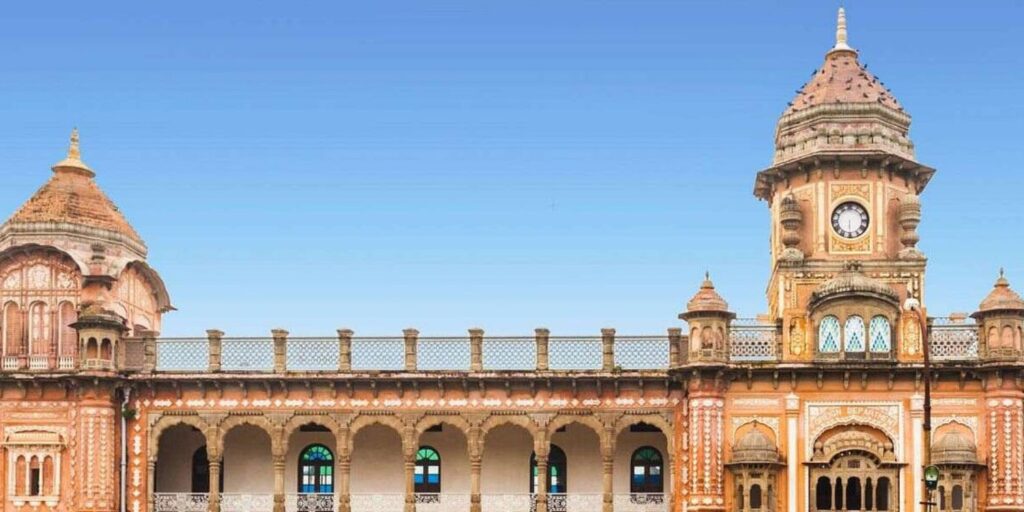Welcome to a land where history breathes through the timeless Jammu Kashmir monuments.
Nestled amidst the majestic Himalayas, Jammu and Kashmir boast a rich cultural heritage, reflected vividly in its architectural marvels.
From the serene tranquility of ancient temples to the grandeur of Mughal gardens, each monument is a testament to the region’s glorious past.
Jammu Kashmir monuments exhibit a fusion of various architectural styles influenced by centuries of diverse rulers and cultures.
The intricately carved temples of Jammu, such as the renowned Vaishno Devi Temple, showcase the devotion and craftsmanship of generations past.
Meanwhile, the opulent palaces of Kashmir, like the iconic Shalimar Bagh, offer a glimpse into the lavish lifestyles of Mughal emperors.
Exploring Jammu Kashmir monuments is akin to embarking on a journey through time, where every step uncovers a new chapter of history.
Whether you’re a history enthusiast, an architecture lover, or simply a traveler seeking to immerse yourself in the past, these Jammu Kashmir monuments promise a fantastic experience, leaving a mark on your soul.
1. Mughal Gardens
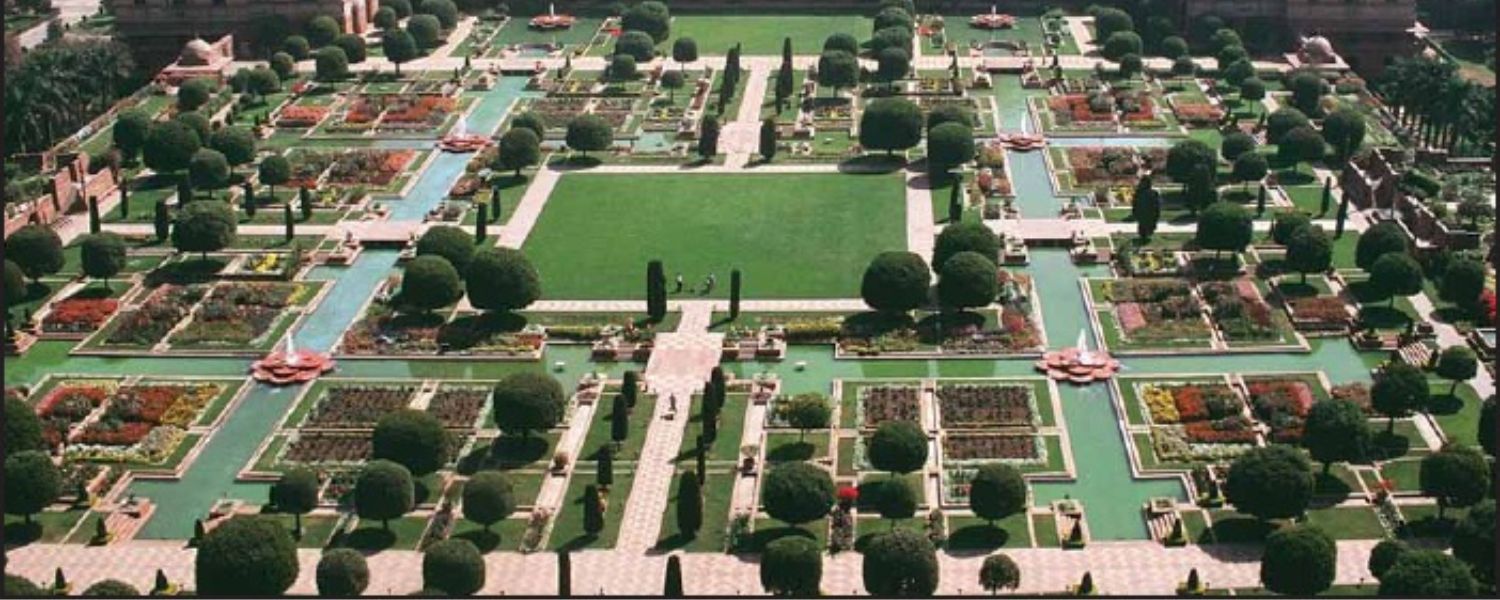
The Mughal Gardens of Jammu Kashmir monuments are renowned for their exquisite design and meticulous layout.
Inspired by the concept of paradise gardens, these architectural marvels were constructed during the Mughal era, with each garden reflecting the grandeur and luxury of the time.
The intricate network of pathways, lush greenery, and vibrant floral displays create an enchanting ambiance that transports visitors to a bygone era of splendor and extravagance.
One of the defining features of the Mughal Gardens is the elaborate use of water elements, including fountains and water chutes.
These water features not only enhance the classical appeal of the gardens but also serve symbolic purposes.
The flowing water symbolizes the rejuvenation and renewal of life, mirroring the cool, mountainous streams that are abundant in the region.
It is said that the Mughal emperors sought to recreate the Paradise described in Islamic tradition, where gardens were depicted as havens of tranquility and beauty.
As visitors wander through the meticulously manicured lawns and marvel at the intricately designed pathways, they can’t help but be awestruck by the sheer grandeur of the Mughal Gardens.
From the terraced slopes adorned with blooming flowers to the tranquil pools reflecting the azure skies, every aspect of these gardens exudes a sense of serenity and elegance.
Today, the Mughal Gardens of Jammu and Kashmir stand to the enduring legacy of the Mughal Empire.
They serve as popular tourist destinations, attracting visitors from far and wide who immerse themselves in these architectural wonders’ timeless beauty.
Whether it’s strolling amidst the fragrant blooms or simply admiring the intricate craftsmanship, a visit to the Mughal Gardens is an experience that promises to leave a lasting impression on all who wander through its hallowed grounds.
2. Pari Mahal
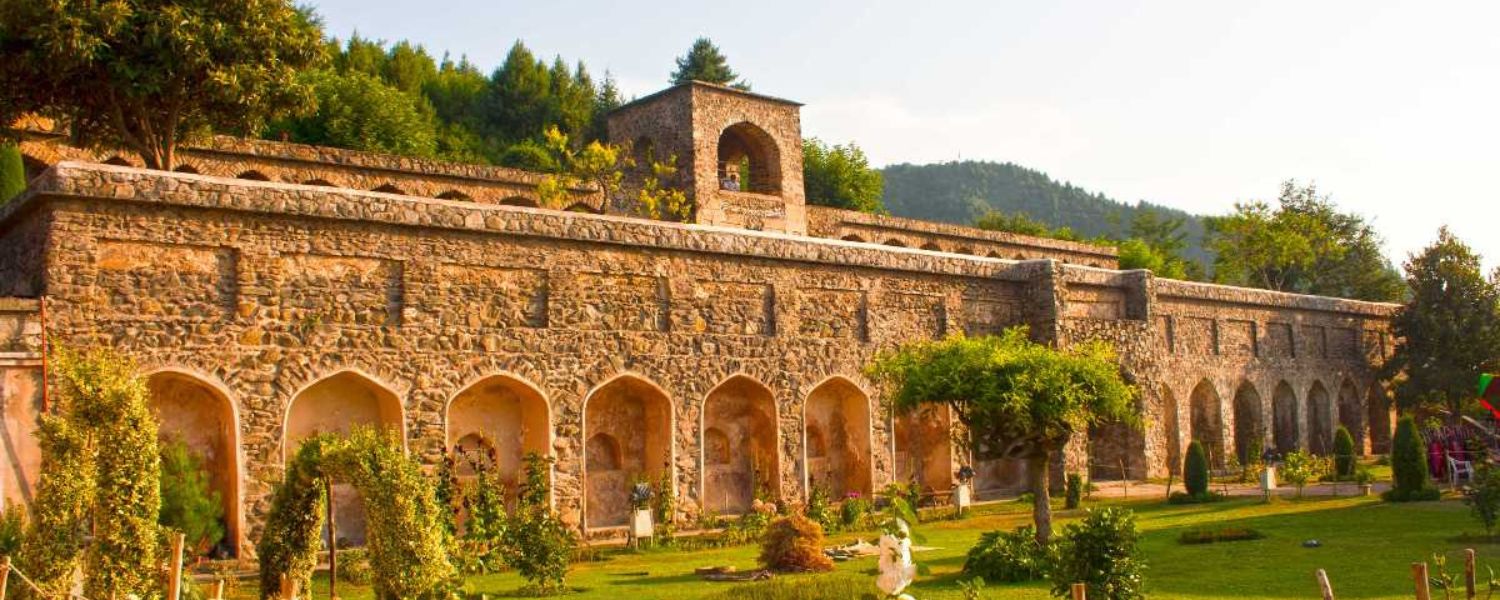
Nestled atop the picturesque Zabarwan mountain range, overlooking the enchanting city of Srinagar and the serene Dal Lake in the Indian UT of Jammu and Kashmir, lies the mesmerizing Pari Mahal.
Also known as Peer Mahal, this architectural marvel is often called “The Palace of Fairies.” Pari Mahal is a magnificent seven-terraced Mughal garden boasting breathtaking views and historical significance.
Built during the Mughal era, this ethereal palace complex showcases that period’s exquisite craftsmanship and architectural brilliance.
Each terrace of Pari Mahal unfolds a unique charm, adorned with lush greenery, vibrant flowers, and intricate water channels.
Visitors can explore the serene pathways adorned with elegant fountains and quiet nooks while soaking in the tranquil ambiance and panoramic vistas.
Pari Mahal is a testament to Jammu Kashmir’s rich cultural heritage and architectural grandeur.
It is a popular tourist place, offering tourists a glimpse into the region’s glorious past and unparalleled natural beauty.
With its serene surroundings and captivating allure, Pari Mahal continues to enchant visitors worldwide; amidst the splendor of Srinagar’s landscapes, they are invited to embark on a journey of exploration/discovery.
3. Shalimar Bagh
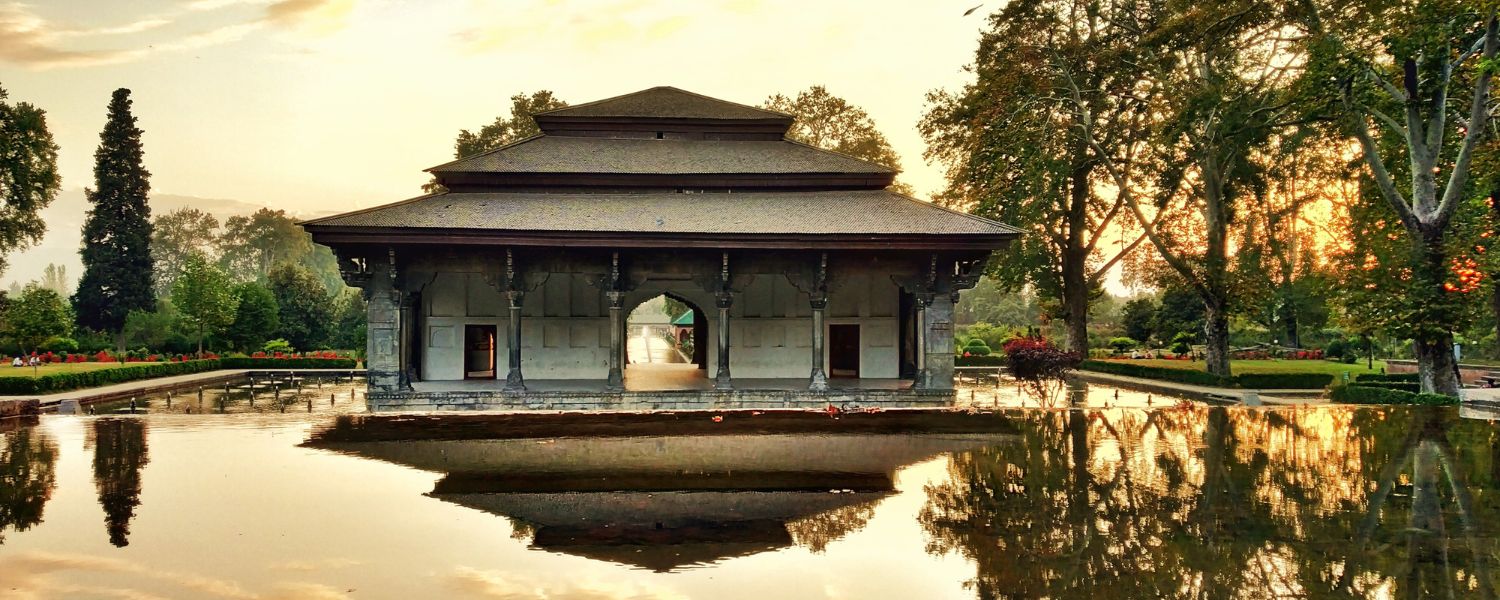
Explore the enchanting beauty of Shalimar Bagh, a captivating Jammu Kashmir monument in the heart of Jammu and Kashmir.
Shalimar Bagh is a testament to the region’s rich cultural heritage and is adorned with exquisite china khanas, or arched niches, that flank the serene garden waterfalls.
Once illuminated by the soft glow of oil lamps during the night, these unique niches lent a magical aura to the cascading waters, a magical setting resembling a storybook scene.
Built with meticulous craftsmanship and architectural finesse, Shalimar Bagh beckons visitors to immerse themselves in its tranquil ambiance and marvel at its timeless beauty.
Whether you’re strolling along its lush pathways or admiring the intricate design of its structures, every corner of Shalimar Bagh offers a glimpse into the opulent history and grandeur of Kashmiri royalty.
Discover the allure of this historic monument, where nature and architecture intertwine to create an unforgettable experience for all who wander its grounds.
4. Jamia Masjid
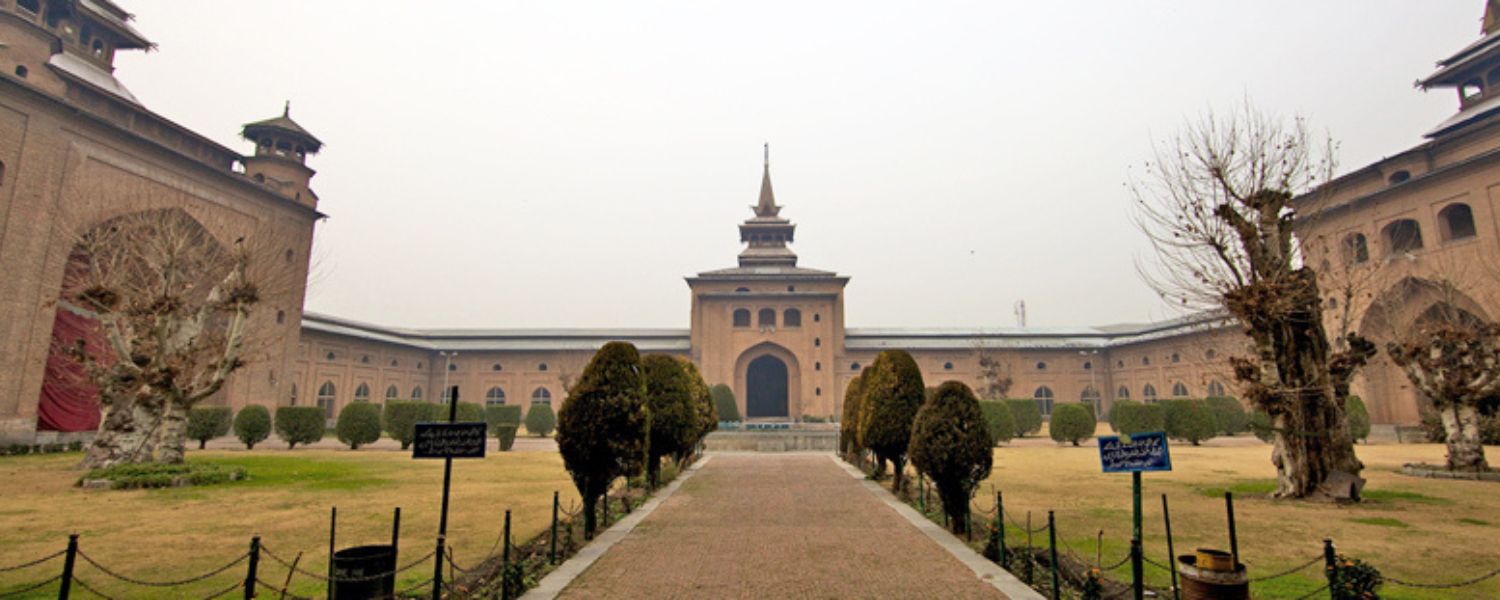
Discover the grandeur of Jammu and Kashmir’s historical monuments, where the Jamia Masjid stands tall as a testament to timeless architectural brilliance.
Dating back to 1400 A.D. under the patronage of Sultan Sikandar, this majestic mosque graces the heart of the old city of Nowhatta, Srinagar.
Its allure lies in its age and exquisite craftsmanship, captivating visitors with its intricate design and serene ambiance.
Adorned with elegant arches and ornate minarets, Jamia Masjid enchants all who enter its sacred precincts.
As a revered symbol of Kashmiri heritage, it holds a special place in the hearts of locals and tourists alike.
Whether you seek solace in prayer or wish to marvel at its beauty, Jamia Masjid welcomes you with open doors and a rich tapestry of history waiting to be explored.
Immerse yourself in the legacy of this architectural marvel and experience the cultural richness of Jammu and Kashmir firsthand.
5. Shankaracharya Temple
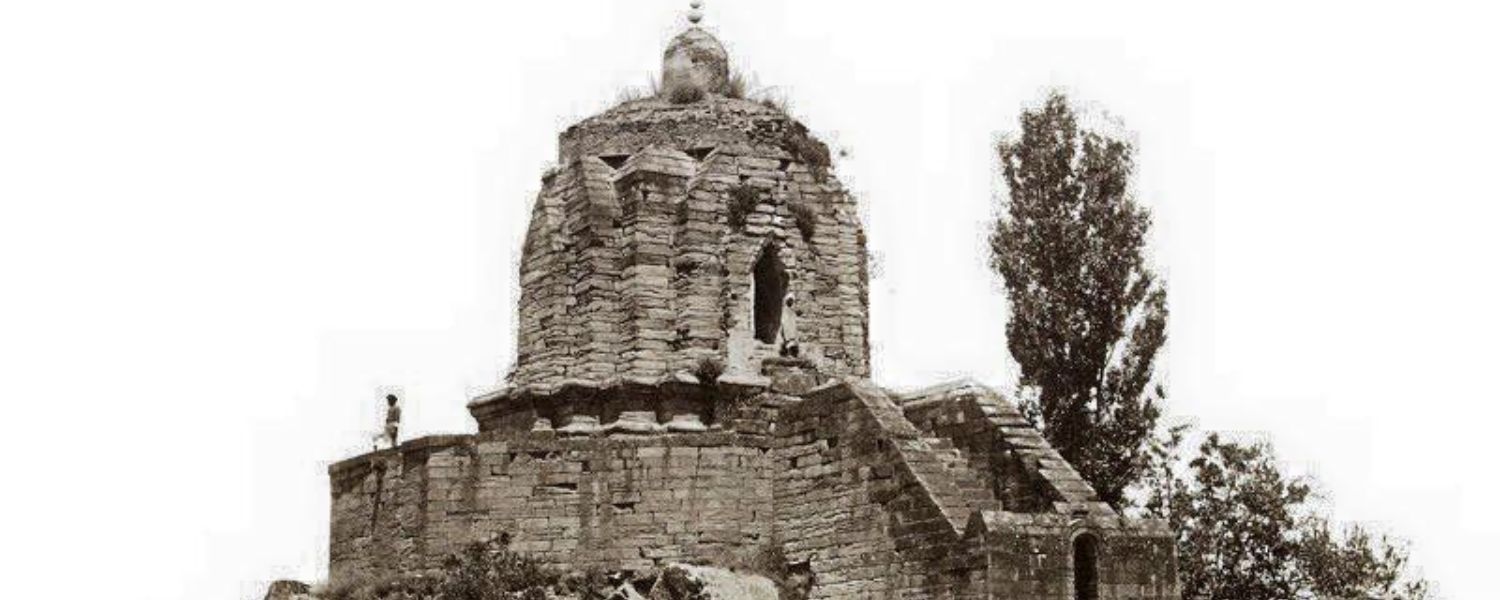
Nestled atop the majestic Shankaracharya Hill within the Zabarwan Range in Srinagar, the Shankaracharya Temple, also known as Jyeshteshwara Temple, stands as a serene testament to Hindu spirituality in the heart of the Indian UT of Jammu and Kashmir.
Devoted to Lord Shiva, this ancient Hindu temple holds immense significance for devotees and visitors.
Offering breathtaking panoramic views of the surrounding valley and the shimmering waters of Dal Lake, the temple serves as a place of worship and a beacon of tranquility and spiritual solace.
Pilgrims embark on a journey up the winding path to seek blessings and immerse themselves in the divine aura of the temple.
With its rich history and spiritual ambiance, the Shankaracharya Temple stands as a cherished monument, symbolizing the enduring cultural heritage of Jammu Kashmir monuments.
Explore enchanting places to visit in Jammu Kashmir, where every corner tells a story of scenic beauty.
6. Bahu Fort
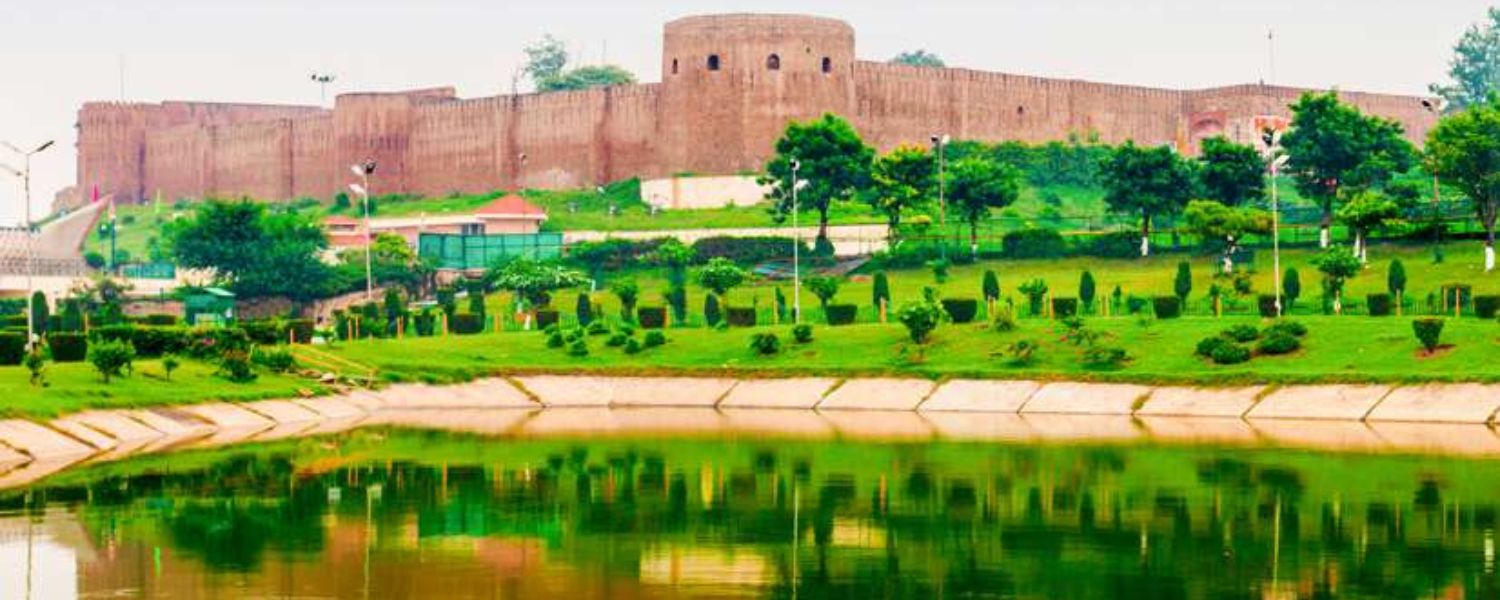
Nestled along the serene banks of the Tawi River in the heart of Jammu, the region’s history and cultural heritage are exemplified by the towering Bahu Fort.
This historic monument, a jewel in the crown of the Jammu Kashmir monument’s architectural marvels, is steeped in legend and lore.
According to local folklore, the fort was commissioned by Bahu Lochan, the brother of Jambu Lochan, the legendary founder of Jammu.
With its ancient walls echoing tales of bygone eras, the Bahu Fort offers visitors a glimpse into the region’s glorious past.
From its strategic perch atop a hill, the fort provides breathtaking views of the surrounding landscape, inviting visitors to themselves in its timeless charm.
Today, the Bahu Fort stands not only as a symbol of Jammu’s illustrious past but also as a beloved landmark that continues to captivate visitors from far and wide.
7. Hazratbal Shrine
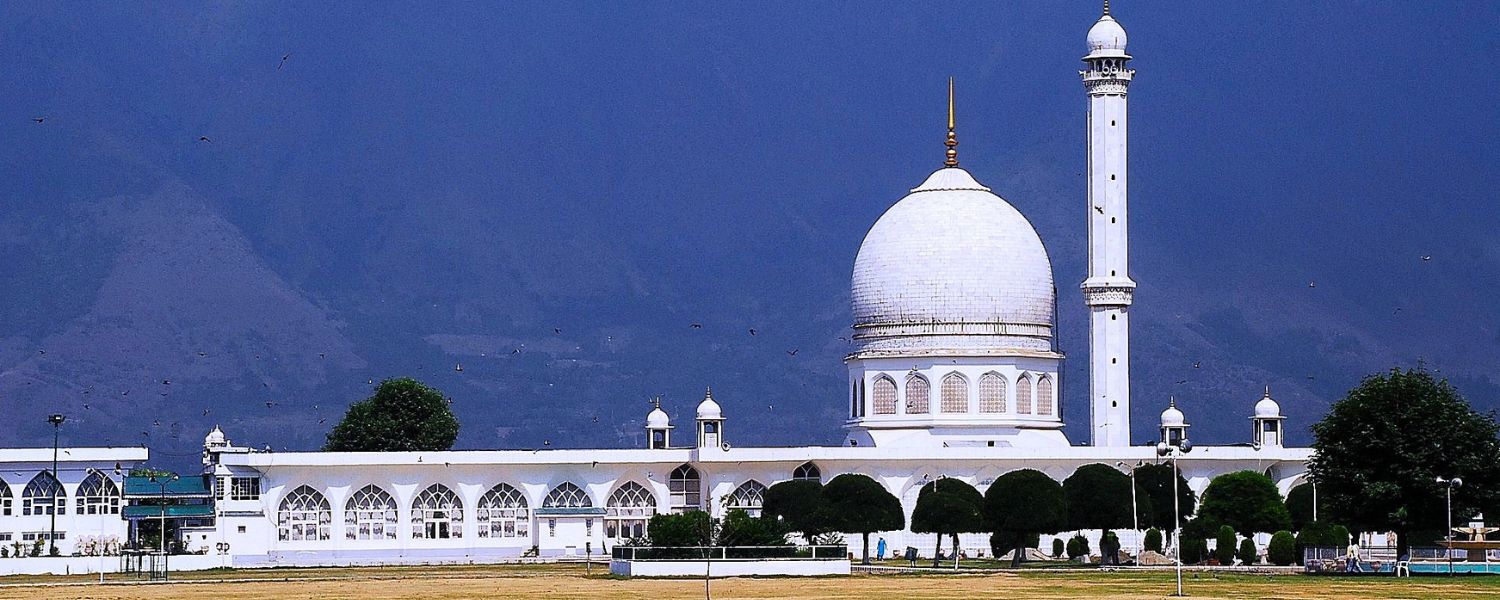
The Hazratbal Shrine, also known as Dargah Sharif, stands as a revered Muslim monument nestled in the picturesque locale of Hazratbal in Srinagar, Jammu and Kashmir, India.
This sacred site holds immense significance for followers of Islam as it houses a precious relic known as Moi-e-Muqqadas, believed to be a strand of hair from the revered Islamic prophet Muhammad.
Perched serenely on the iconic Dal Lake’s northern shores, the shrine symbolizes spiritual reverence and historical importance in the region.
Pilgrims from far and comprehensive visit Hazratbal to pay homage, seeking solace and blessings. The shrine’s architecture blends Persian and Mughal influences, boasting intricate details and stunning craftsmanship.
Hazratbal Shrine serves as a religious site and a cultural landmark, attracting tourists and devotees alike to witness its splendor and soak in the aura of divinity. It is a testament to the Islamic heritage that thrives in the heart of Jammu and Kashmir.
8. Amar Mahal Palace
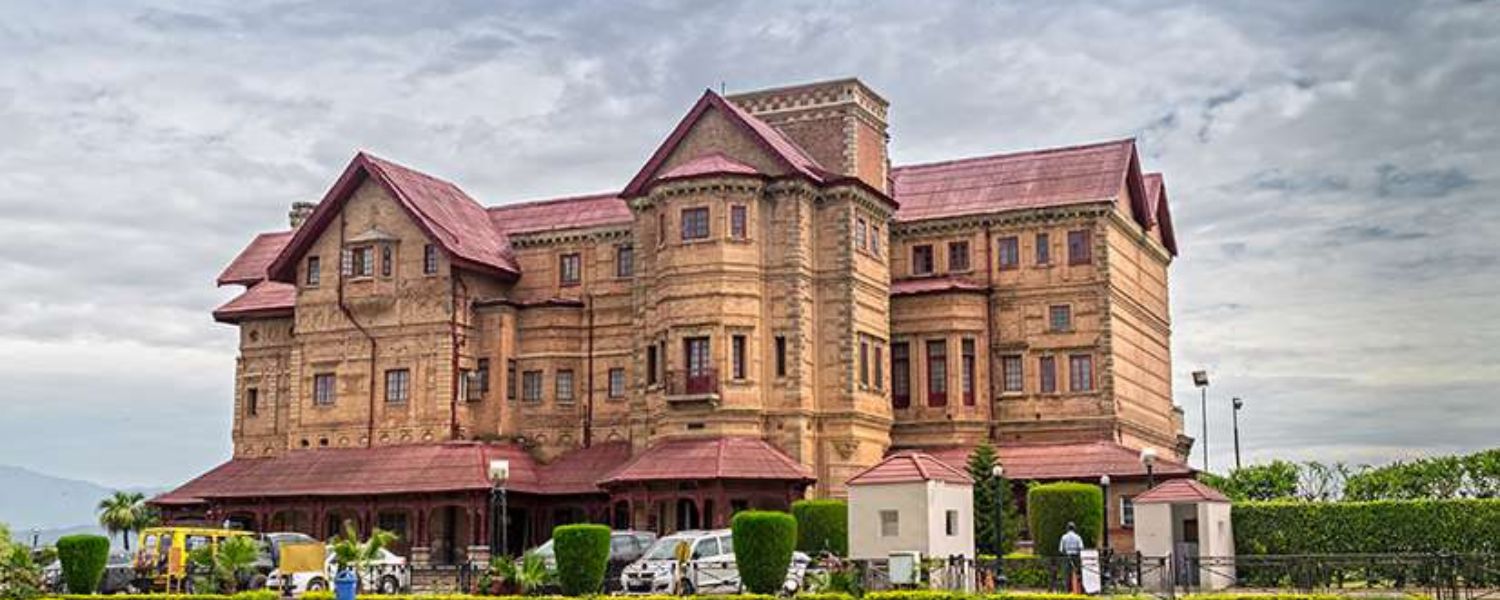
Nestled on the serene banks of the Tawi River in Jammu and Kashmir, the region’s grandeur and heritage are embodied in the towering Amar Mahal Palace.
Once the final abode of the illustrious Dogra Kings, belonging to the esteemed Suryavanshi Rajputs lineage, it later became the residence of Maharani Tara Devi, the beloved wife of the late Raja Hari Singh.
Stepping into this majestic palace is akin to stepping back in time, as you’re greeted by a remarkable display of royal family portraits adorning its walls, showcasing the rich history and lineage of the rulers.
Each picture tells a story, depicting the hierarchy and legacy of the esteemed dynasty. With its architectural splendor and historical sides, the Amar Mahal Palace stands as a revered monument, offering tourists a glimpse into the regal past of Jammu Kashmir monuments.
9. Martand Sun Temple
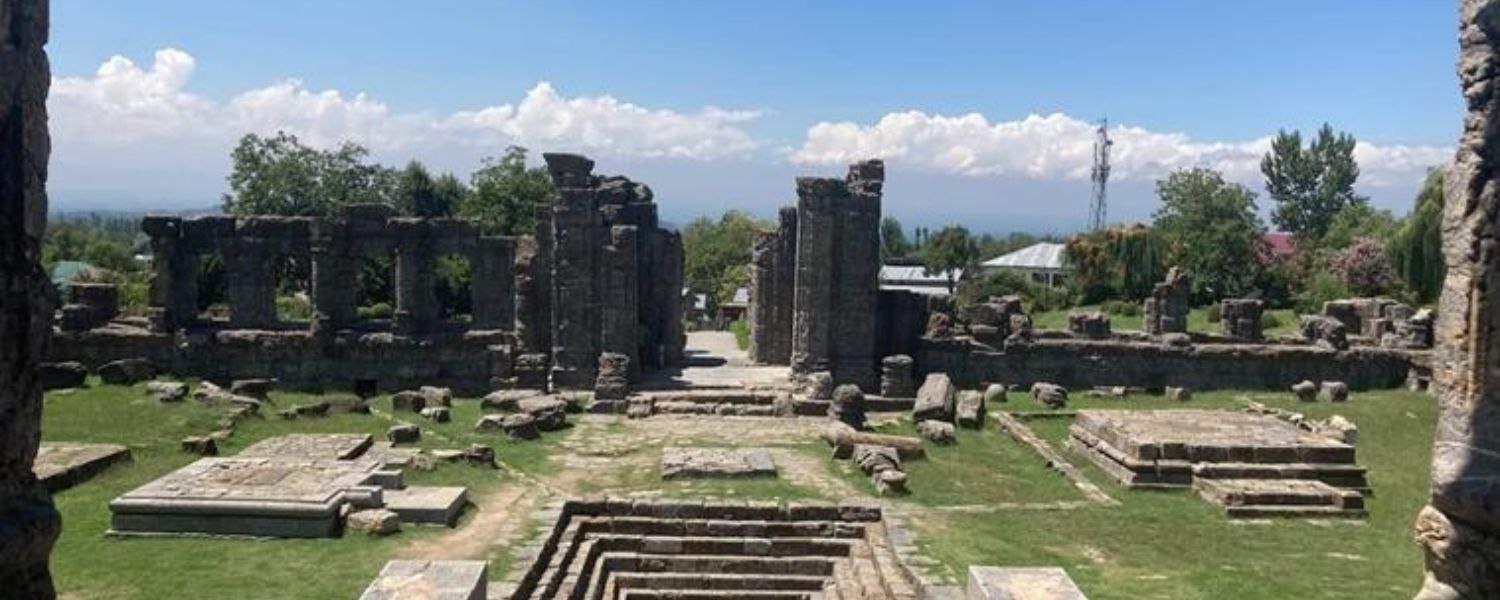
Nestled in the heart of Jammu and Kashmir, the Martand Sun Temple stands as a testament to the region’s rich cultural heritage.
This ancient monument, dedicated to the Sun God, dates back to the 8th century A.D. and is renowned for its exquisite architecture and intricate carvings.
Perched atop a plateau overlooking the picturesque Kashmir Valley, the temple offers breathtaking views and a glimpse into the region’s glorious past.
Built by King Lalitaditya Muktapida of the Karkota dynasty, the Martand Sun Temple showcases the grandeur of Kashmiri architecture.
Its impressive colonnaded structure and finely sculpted panels reflect the artistic brilliance of the artisans of yore.
Despite being in ruins today, the temple attracts tourists from far and wide, drawn by its historical significance and architectural beauty.
Declared a protected monument by the (ASI) Archaeological Survey of India, the Martand Sun Temple reminds us of the glorious legacy of Jammu Kashmir monuments and stands as a symbol of reverence and admiration for generations to come.
10. Leh Palace
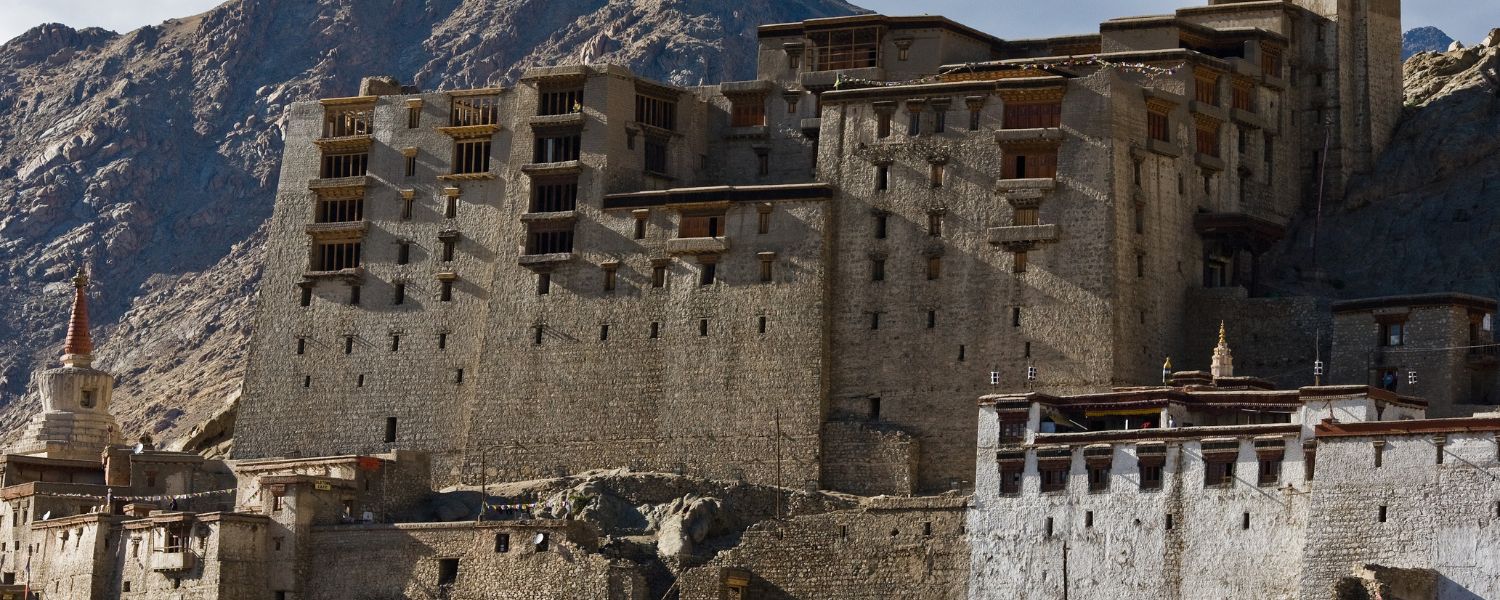
Nestled in the enchanting landscape of Jammu and Kashmir, Leh Palace is a testament to the region’s rich history and architectural prowess.
This magnificent monument, perched atop a hill overlooking Leh City, boasts captivating views and intriguing tales of the past.
King Sengge Namgyal constructed it during the 17th century; it served as the royal residence for the Namgyal dynasty of Ladakh.
Leh Palace is a fine example of Tibetan architecture created using mud bricks, wood, and stone. Its nine-story structure offers a glimpse into the royal lifestyle and cultural heritage of the bygone era.
Visitors can explore its intricate design, ancient artifacts, and ornate interiors, immersing themselves in the grandeur of the past.
Leh Palace is a popular tourist attraction today, drawing history enthusiasts, architecture fans, and nature lovers alike. Its strategic location and history make it a must-visit place for anyone with a fantastic side of the wonders of Jammu and Kashmir.
11. Poonch Fort
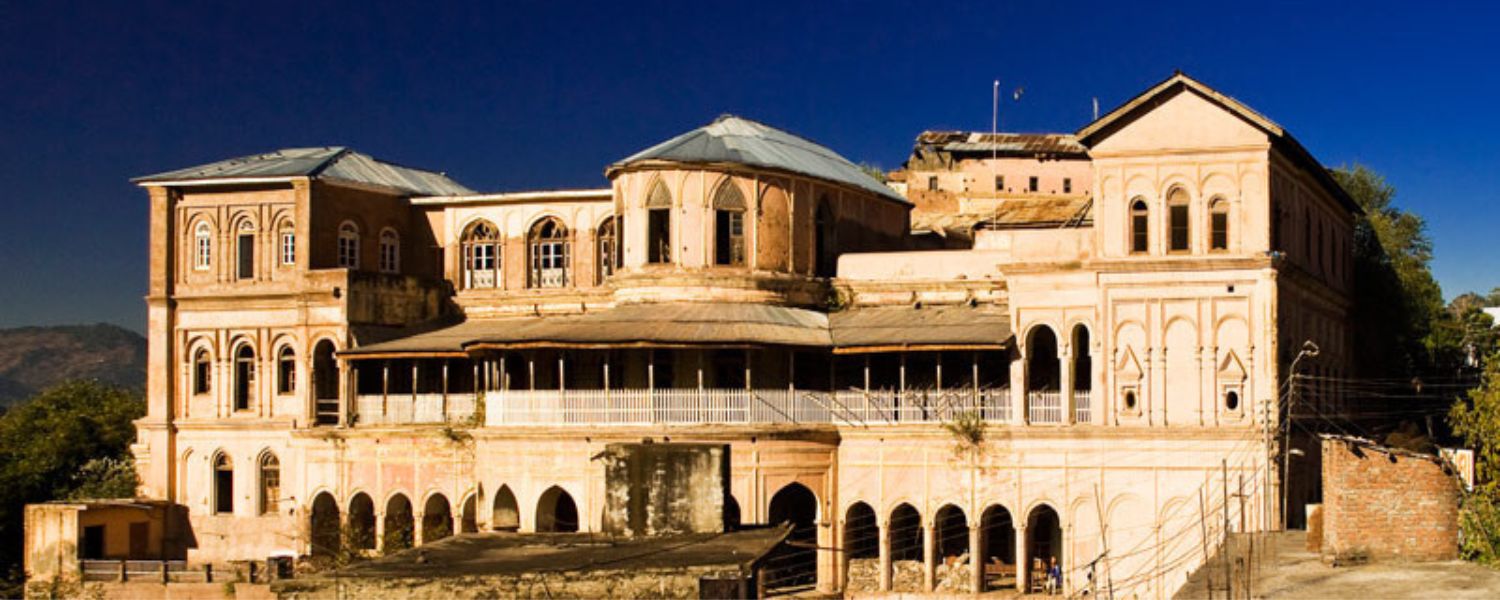
Poonch Fort, nestled in the picturesque region of Jammu and Kashmir, is a timeless emblem of the region’s rich historical legacy.
This monumental fortress in Poonch boasts a captivating history dating back centuries. Constructed strategically atop a hill, Poonch Fort offers panoramic views of its surroundings, showcasing the breathtaking beauty of the Himalayan landscape.
Originally built during the Mughal era, the fort underwent several renovations/expansions under different rulers, including the Dogras and the Sikhs.
Its sturdy architecture, characterized by thick stone walls and imposing gateways, reflects the defensive prowess of its builders.
Today, Poonch Fort is a testament to the region’s cultural heritage, attracting tourists and history enthusiasts alike.
Visitors can explore its ancient corridors, marvel at its architectural grandeur, and immerse themselves in the tales of bravery that echo within its walls.
A visit to Poonch Fort offers a glimpse into the storied past of Jammu and Kashmir, making it a must-see destination for anyone keen on unraveling the region’s historical tapestry.
12. Chashme Shahi
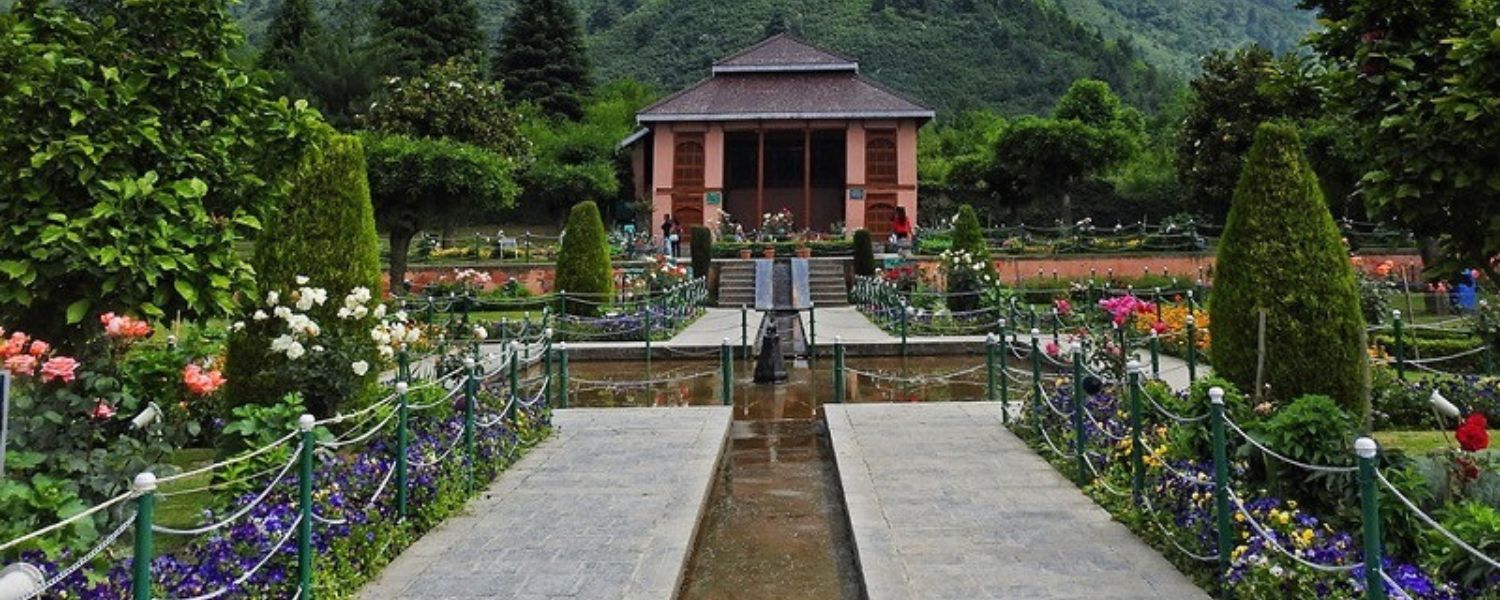
Chashme Shahi, also known as Chashma I Shahi or Cheshma Shahi, is a splendid testament to the grandeur of Mughal architecture nestled in the serene landscapes of Jammu and Kashmir.
This enchanting garden was crafted in 1632 AD by Ali Mardan Khan, a trusted governor appointed by the renowned Mughal emperor Shah Jahan.
It is said that Shah Jahan commissioned the construction of Chashme Shahi as a heartfelt gift for his beloved eldest son, Prince Dara Shikoh.
This exquisite garden, encompassing an area around a natural spring, reflects its creators’ meticulous craftsmanship and artistic vision.
The name “Chashme Shahi” translates to “Royal Spring,” aptly capturing the essence of this picturesque sanctuary.
Visitors to Chashme Shahi are greeted by terraced lawns, vibrant flowerbeds, and cascading fountains, all harmoniously blending into the surrounding lush greenery.
Steeped in history and cultural significance, Chashme Shahi is a testament to the coming legacy of the Mughal empire in the Kashmir region, offering visitors a tranquil retreat amidst breathtaking natural beauty.
13. Hari Parbat Fort
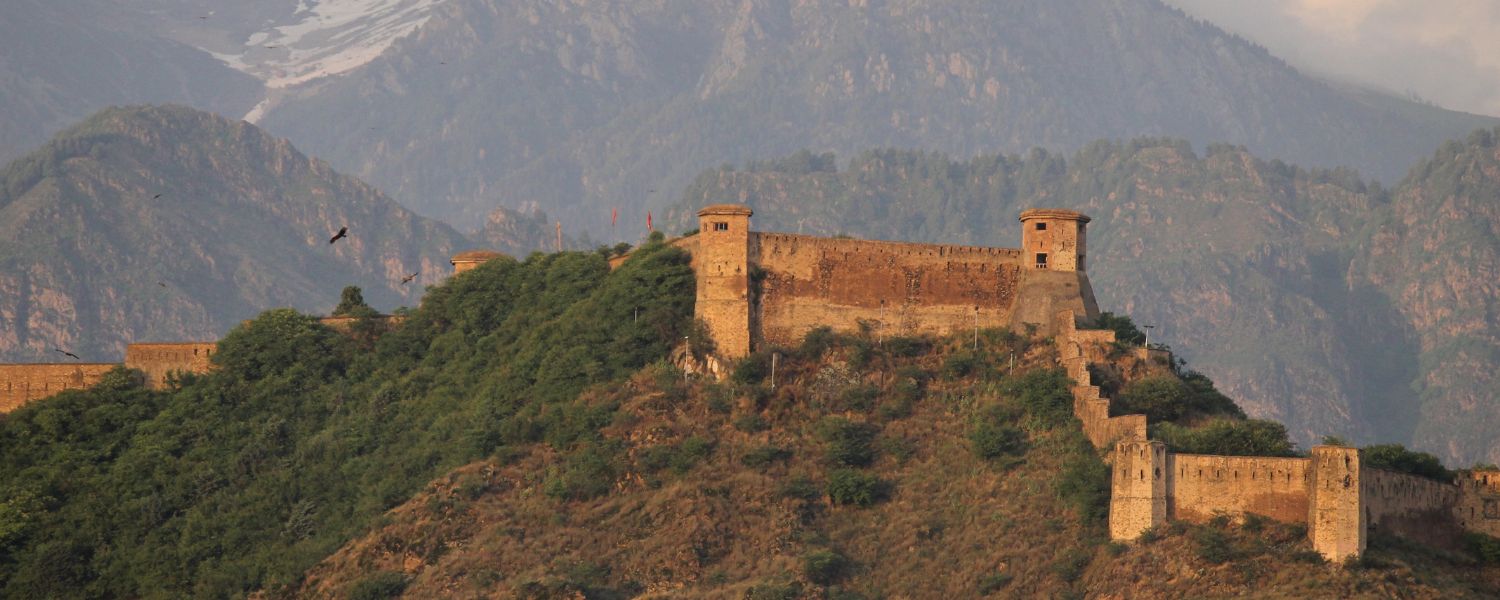
Nestled amidst the breathtaking landscape of Jammu Kashmir monuments, Hari Parbat Fort is a timeless emblem of the region’s rich history and architectural grandeur.
This majestic fort, also known as Koh-e-Maran, is perched atop the Hari Parbat hill in Srinagar, offering panoramic views of the city and the picturesque Dal Lake.
Built during the reign of Mughal Emperor Akbar in the 17 century, the fort showcases a fascinating blend of Mughal, Sikh, and Afghan architectural styles.
Its imposing walls, bastions, and gates tell tales of bygone eras marked by power struggles and cultural exchanges.
Within its precincts lie historic structures like the Shakti Temple, dedicated to the Hindu goddess Sharika, and the revered Muslim shrine, the Durrani Fort.
Today, Hari Parbat Fort is not only a monument of historical but also a symbol of the enduring spirit of Jammu and Kashmir.
Visitors can explore its rich heritage while soaking in the beauty of the surrounding landscape, making it a must-visit destination for history enthusiasts and nature lovers alike.
14. Tomb of Z ain-ul-Abidin’s Mother
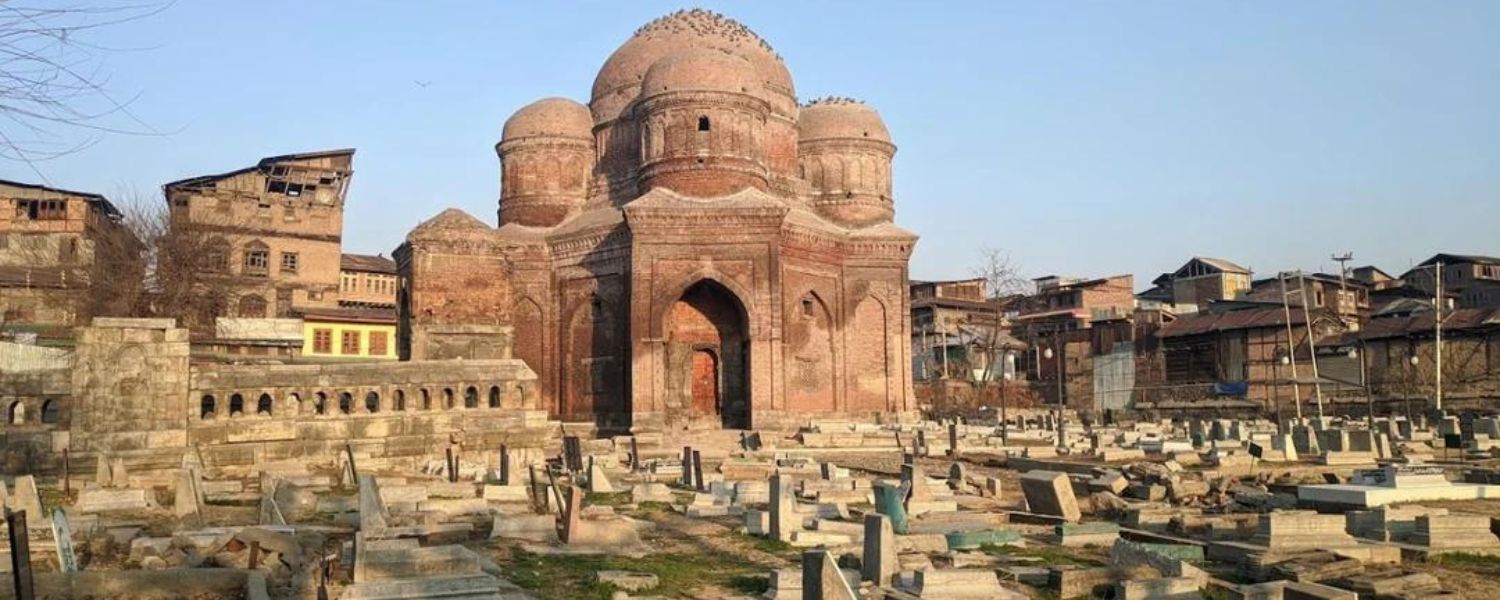
Nestled amidst the breathtaking landscapes of Jammu Kashmir monuments lies the Tomb of Zain-ul-Abidin’s Mother, a significant historical and cultural monument.
This monument, located in Srinagar, serves as a testament to the region’s rich heritage. Zain-ul-Abidin, also known as Budshah, was a revered ruler of Kashmir during the 15th century.
The tomb is dedicated to his mother, whose identity and contributions echo through the annals of history. Constructed with intricate craftsmanship, the Tomb of Zain-ul-Abidin’s Mother stands as a symbol of architectural excellence.
Visitors can marvel at its complicated design elements and immerse themselves in the stories of the past. Surrounded by greenery and serene surroundings, the monument offers a peaceful retreat for those taking solace amidst history’s embrace.
Exploring this monument allows one to delve into the rich tapestry of Jammu and Kashmir’s cultural heritage while paying homage to the influential figures who shaped its history.
The Tomb of Zain-ul-Abidin’s Mother is a timeless tribute, inviting visitors to connect with the region’s illustrious past.
15. Nishat Bagh
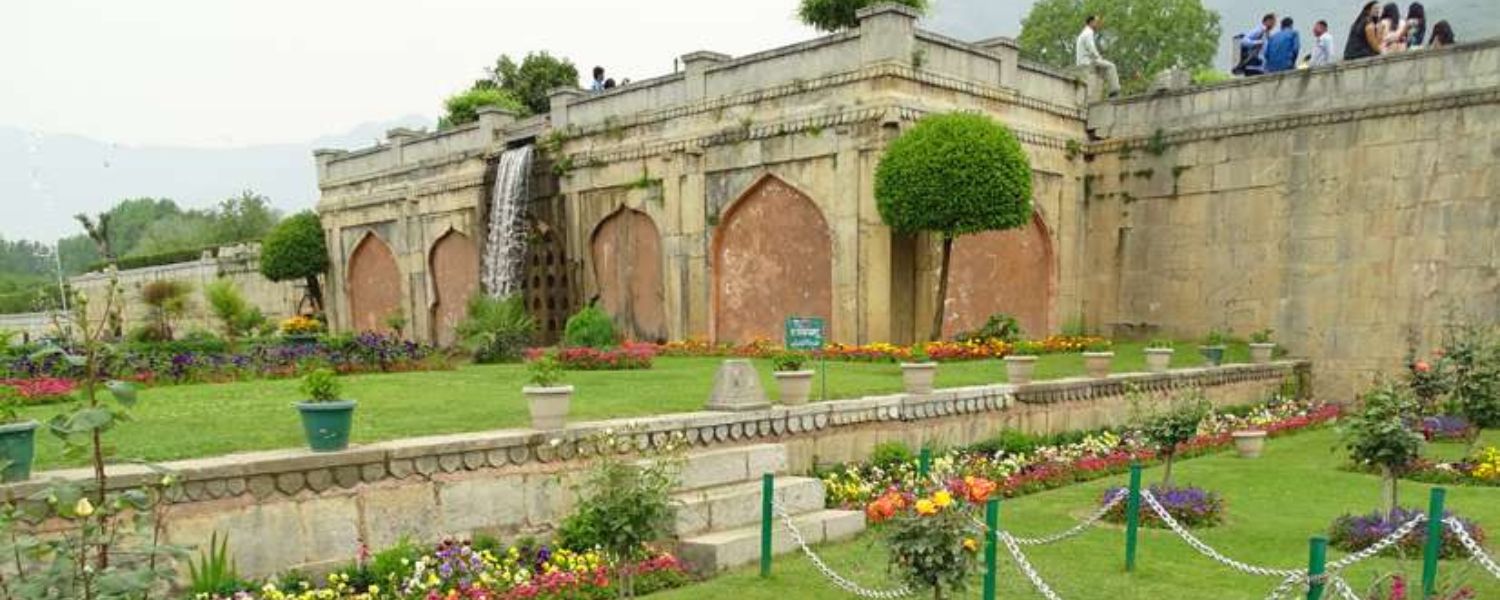
Nishat Bagh, nestled in the breathtaking landscape of Jammu and Kashmir, stands as the region’s rich cultural heritage.
This stunning Mughal garden, also known as the Garden of Joy, dates back to the 17th century and was commissioned by Asif Khan, the brother of Empress Nur Jahan.
Located on the eastern part of the Dal Lake, Nishat Bagh boasts meticulously landscaped terraces adorned with vibrant flowers, serene water channels, and majestic Chinar trees, offering visitors a tranquil retreat amidst nature’s splendor.
The garden’s layout symbolizes the Persian chahar bagh design, featuring four divided sections representing the four rivers of Paradise as per Islamic belief.
Visitors can wander through the pathways, marveling at the intricate architecture of pavilions, cascading fountains, and panoramic views of the surrounding mountains.
Nishat Bagh serves as a picturesque attraction and holds historical significance, reflecting the grandeur of the Mughal era in Kashmir.
It remains a must-visit place for those seeking solace and cultural immersion in the heavenly realms of Jammu and Kashmir.
16. Pahalgam Mosque
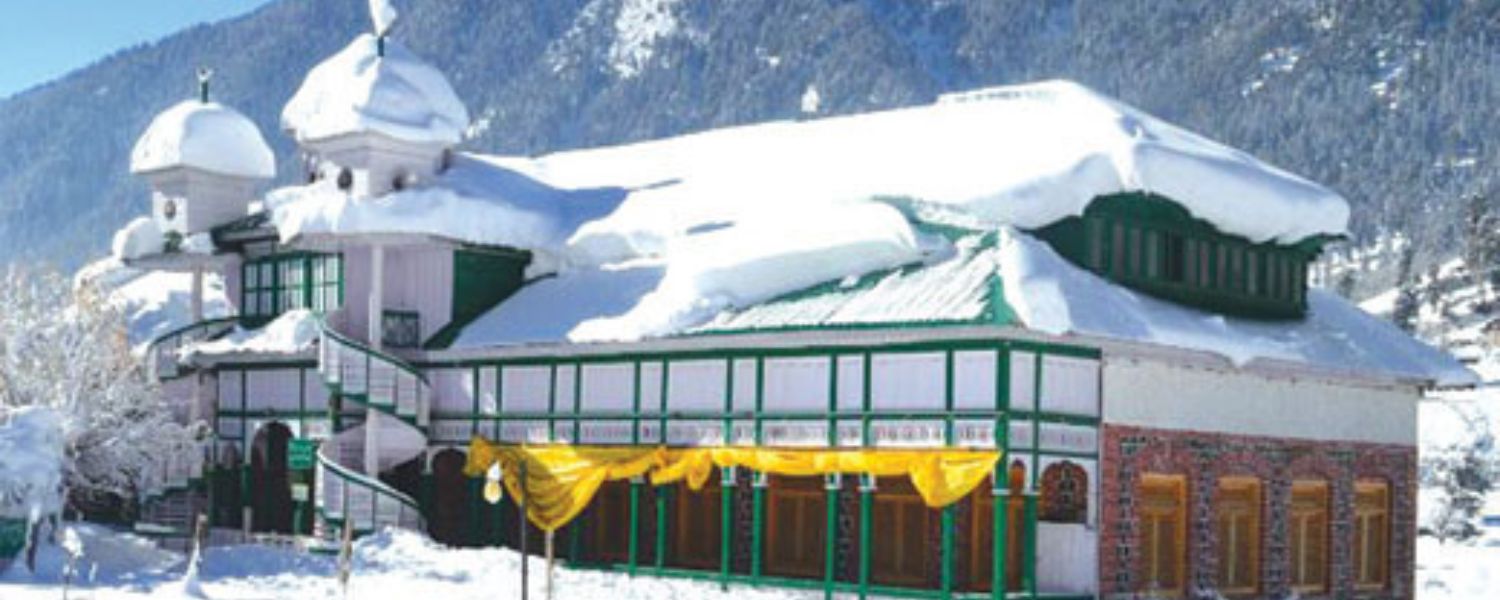
Nestled amidst the breathtaking landscapes of Jammu and Kashmir, the Pahalgam Mosque is a testament to the region’s rich cultural heritage.
This iconic monument, located in Pahalgam’s serene town, symbolizes religious harmony and architectural brilliance.
Constructed with traditional Kashmiri architectural styles, the mosque features intricate wood carvings, exquisite artwork, and ornate details that captivate visitors.
The Pahalgam Mosque holds significant historical importance as a place of worship for the local Muslim community and serves as a peaceful retreat for spiritual contemplation.
Surrounded by majestic mountains and greenery, the mosque offers a tranquil ambiance for prayer and reflection. Tourists can immerse themselves in the serene atmosphere while marveling at the mosque’s architectural beauty.
As one of the notable monuments in Jammu and Kashmir, the Pahalgam Mosque attracts tourists and pilgrims seeking to explore the region’s cultural heritage.
Its picturesque setting and architectural grandeur make it a must-visit destination for anyone traveling to Pahalgam.
17. Ziarat Peer Mitha
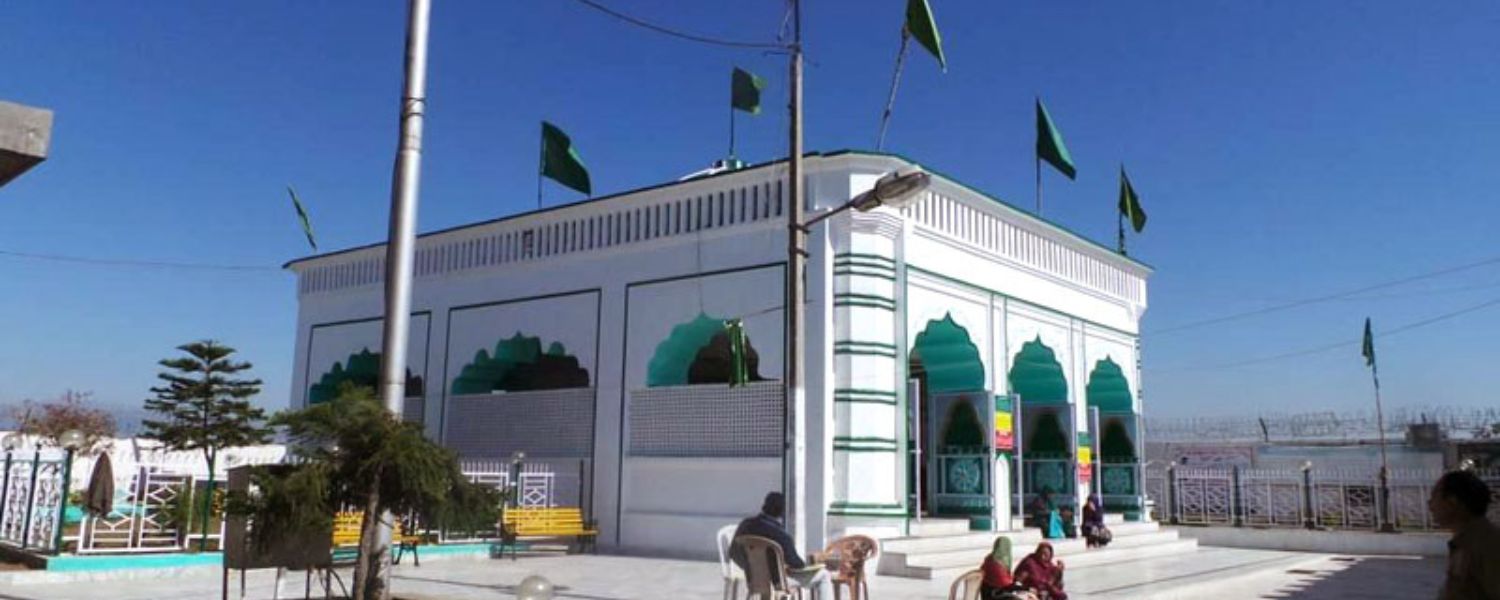
Ziarat Peer Mitha, nestled in the heart of Jammu and Kashmir, is a poignant monument symbolizing the region’s rich cultural heritage.
This revered shrine holds profound significance for locals and visitors alike, attracting pilgrims and history enthusiasts from far and wide.
Situated in the historic city of Jammu, Ziarat Peer Mitha is a testament to the syncretic traditions of the region, blending elements of Hindu and Muslim architecture.
The shrine is dedicated to Peer Mitha, a revered saint known for his spiritual teachings and acts of kindness.
Its architecture reflects a harmonious fusion of intricate carvings, domes, and minarets, creating a serene ambiance conducive to prayer and reflection.
Pilgrims flock to this sacred site to pay their respects and seek blessings for their well-being and prosperity.
Ziarat Peer Mitha stands as a physical structure and a living monument to Jammu and Kashmir’s enduring spiritual and cultural heritage, serving as a beacon of peace and harmony in a region renowned for its attractiveness and cultural diversity.
18. Raghunath Temple

Nestled in the fantastic landscapes of Jammu and Kashmir, the Raghunath Temple stands tall as a significant monument, embodying the region’s rich cultural heritage.
This revered temple in the heart of Jammu city is dedicated to Lord Rama, an incarnation of the Hindu deity Vishnu.
Constructed in the 19th century by Maharaja Gulab Singh, the founder of the Dogra dynasty, the temple complex is a masterpiece of architectural brilliance, adorned with intricate carvings and majestic spires.
Devotees flock to Raghunath Temple yearly to seek blessings and pay homage to Lord Rama. The sanctum sanctorum houses idols of various Hindu deities, while the surrounding halls depict scenes from the epic Ramayana.
The temple’s serene ambiance and spiritual significance make it a must-visit place for tourists and pilgrims, offering a glimpse into Jammu and Kashmir’s religious fervor and cultural richness.
With its timeless charm and historical significance, Raghunath Temple remains a symbol of faith and devotion in the region.
19. Kheer Bhawani Temple
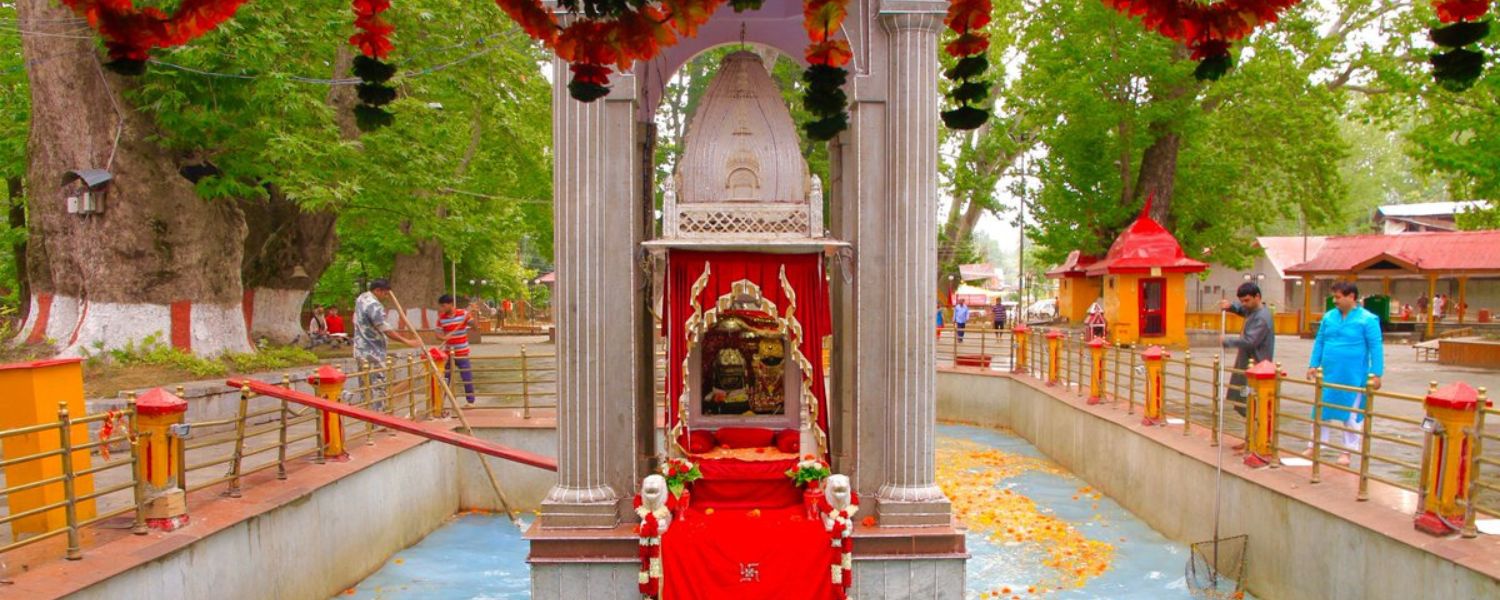
Nestled amidst the serene beauty of Jammu and Kashmir, the Kheer Bhawani Temple is a testament to the region’s rich cultural heritage and religious significance.
Located in the Tulla Mulla village, this sacred site holds immense reverence among Hindu devotees, particularly the Kashmiri Pandit community.
The temple is for the Goddess Ragnya Devi, also known as Kheer Bhawani, who is believed to be the presiding deity of the sacred spring in the temple complex.
Devotees throng to this holy abode, especially during the annual festival of Zeshta Ashtami, to seek the blessings of the goddess and partake in the rituals and prayers conducted here.
The temple’s architectural marvel, with its vibrant colors and intricate designs, adds to its allure, attracting pilgrims and tourists interested in exploring the cultural gems of Jammu and Kashmir.
Surrounded by greenery and tranquil surroundings, the Kheer Bhawani Temple offers a peaceful retreat for spiritual seekers and curious visitors. It is a must-visit among the numerous monuments in Jammu and Kashmir.
20. Khanqah of Shah Hamdan
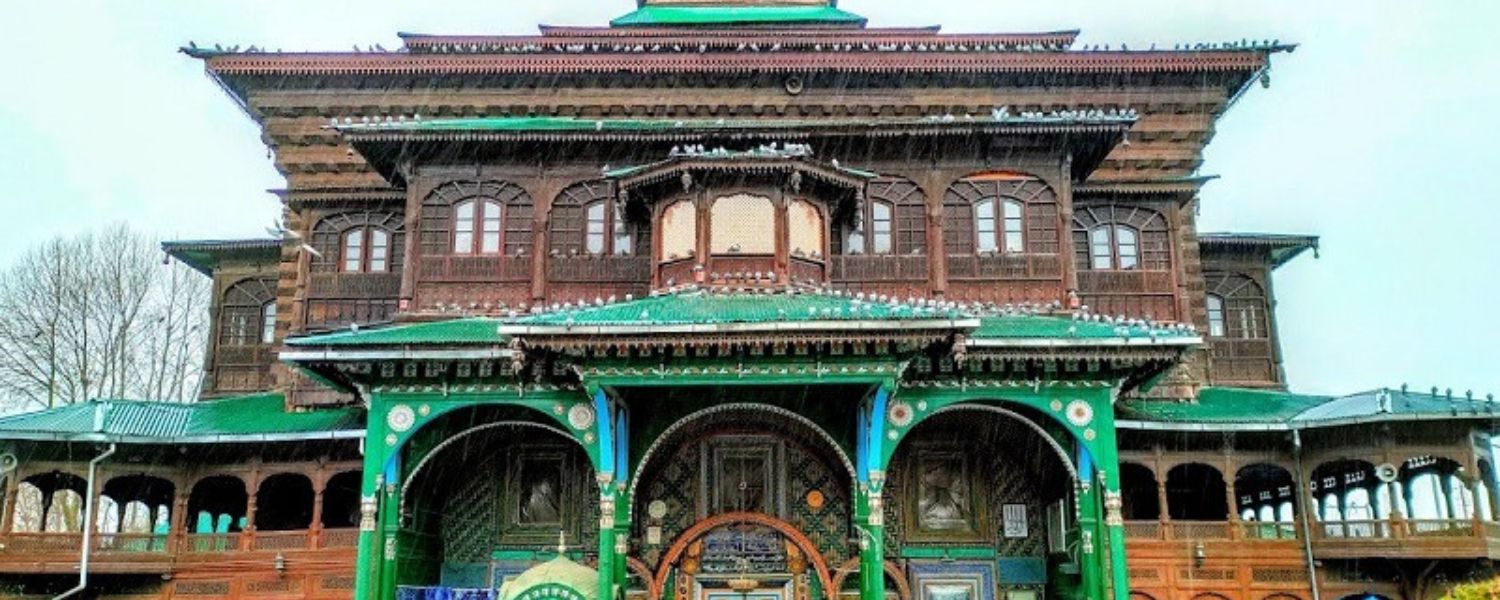
Khanqah of Shah Hamdan stands as a testament to the area’s rich cultural heritage and spiritual significance.
This revered monument holds immense historical importance, tracing back to the 14th century when it was established by Shah Hamdan, a Persian Sufi saint who played an essential role in spreading Islam in the region.
The Khanqah, also known as the Shah Hamdan Masjid, is revered by both Muslims and people of other faiths for its architectural grandeur and spiritual ambiance.
Its distinctive wooden architecture, adorned with intricate carvings and designs, reflects the exquisite craftsmanship of Kashmiri artisans.
Visitors can experience a tranquil atmosphere in its serene confines, conducive to prayer, meditation, and reflection.
Over the centuries, the Khanqah of Shah Hamdan has remained a symbol of religious harmony and cultural syncretism in Jammu and Kashmir, attracting devotees and tourists alike from far and wide.
Its significance transcends boundaries, serving as a beacon of peace and spiritual enlightenment in the heart of the Himalayas.
21. Pathar Masjid
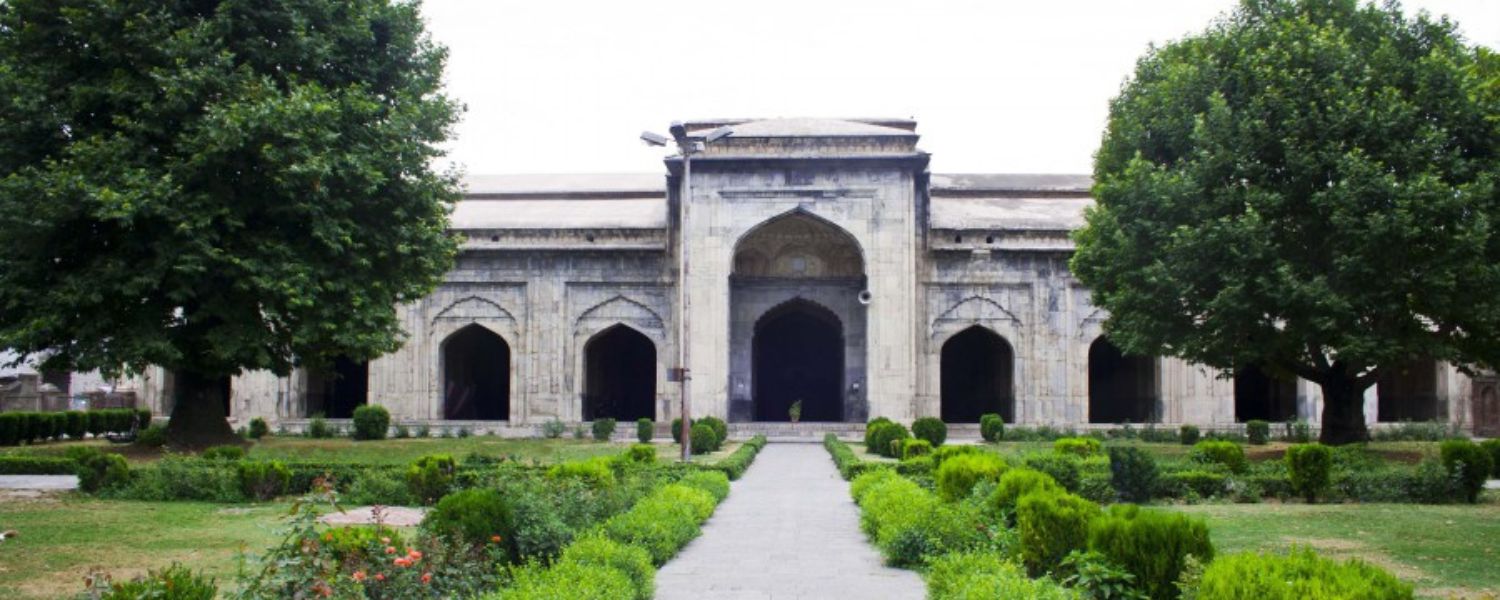
Pathar Masjid is a timeless testament to the region’s rich cultural heritage. Constructed in the early 15th century by Sultan Sikandar, this historic mosque exudes architectural magnificence.
Located in the Nowhatta area of Srinagar, the mosque derives its name from the Persian word “Pathar,” meaning stone, owing to its sturdy stone construction.
Pathar Masjid boasts intricate designs, showcasing a blend of Persian and Islamic architectural styles. Its spacious courtyard and beautifully crafted prayer hall attract visitors and worshippers alike, offering a serene space for contemplation and prayer.
The mosque has stood the test of time, surviving various political and social change periods, making it a significant landmark in the region’s history.
Visitors to Jammu and Kashmir often include Pathar Masjid in their itineraries, not only for its historical significance but also for its tranquil ambiance, offering an insight into the region’s cultural and religious fabric.
As one of the notable monuments in Jammu and Kashmir, Pathar Masjid inspires awe and reverence among locals and tourists, serving as a timeless symbol of the region’s architectural and cultural legacy.
22. Bhimgarh Fort
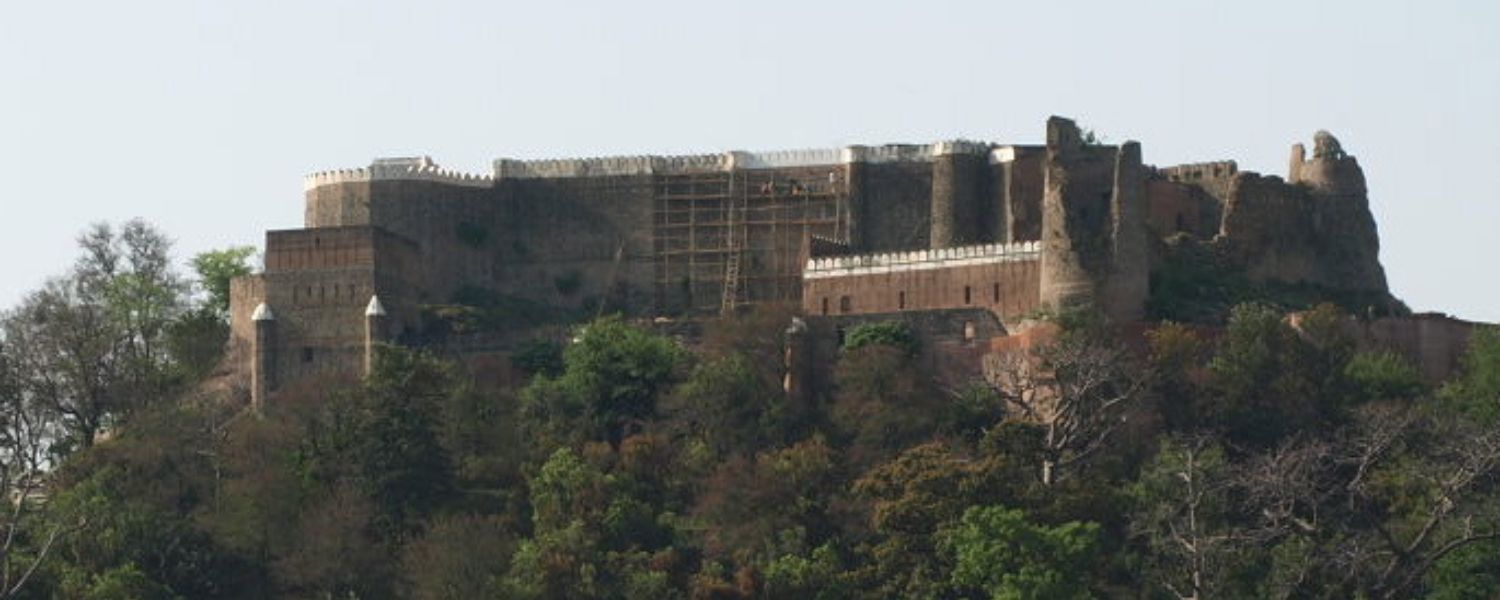
Bhimgarh Fort stands proudly as one of the remarkable Jammu Kashmir monuments, nestled amidst the region’s breathtaking landscapes.
This historic fortress in the Reasi district of Jammu and Kashmir holds immense cultural significance.
Constructed atop a hill, it offers a glimpse into the architectural prowess of the past but also provides panoramic views of the surrounding valleys and mountains.
Built during the time of Maharaja Gulab Singh in the 19th century, Bhimgarh Fort was a strategic stronghold to safeguard the kingdom from external threats.
Its sturdy walls, intricate designs, and strategic location make it a captivating attraction for history enthusiasts and tourists alike.
Visitors can explore the fort’s various sections, including temples, barracks, and courtyards, each echoing tales of bygone eras.
Today, Bhimgarh Fort stands as a testament to the rich heritage and courage of the region, attracting tourists from far and wide to witness its grandeur and soak in the essence of Jammu and Kashmir’s glorious past.
23. Vaishno Devi Temple
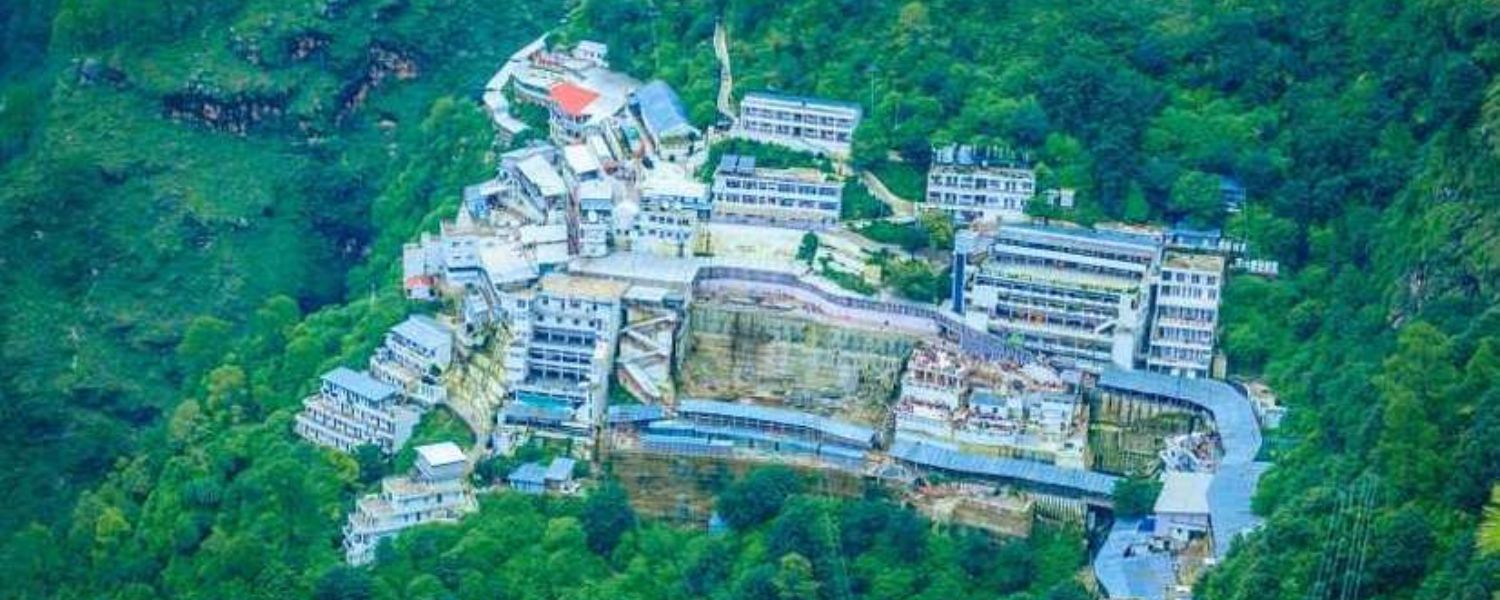
Located in the fantastic state of Jammu and Kashmir, Vaishno Devi Temple stands as one of the most revered monuments in the region.
Nestled in the Trikuta Mountains, this sacred Hindu temple attracts millions of pilgrims annually.
Devotees embark on a challenging journey, trekking through the rugged terrain to reach the temple dedicated to Goddess Vaishno Devi, also known as Mata Rani.
The temple complex comprises several caves and shrines, each with its significance and mythological tales. Legend says that Mata Vaishno Devi meditated in these caves for years, seeking spiritual enlightenment.
The temple architecture showcases intricate designs and sculptures, reflecting the rich cultural heritage of Jammu and Kashmir.
Pilgrims often embark on the journey seeking blessings, fulfillment of wishes, and spiritual solace.
The tranquil ambiance amidst the lush green surroundings adds to the mystical aura of the temple, making it a must-visit for devotees and tourists seeking a divine experience amidst nature’s splendor.
24. Alchi Monastery
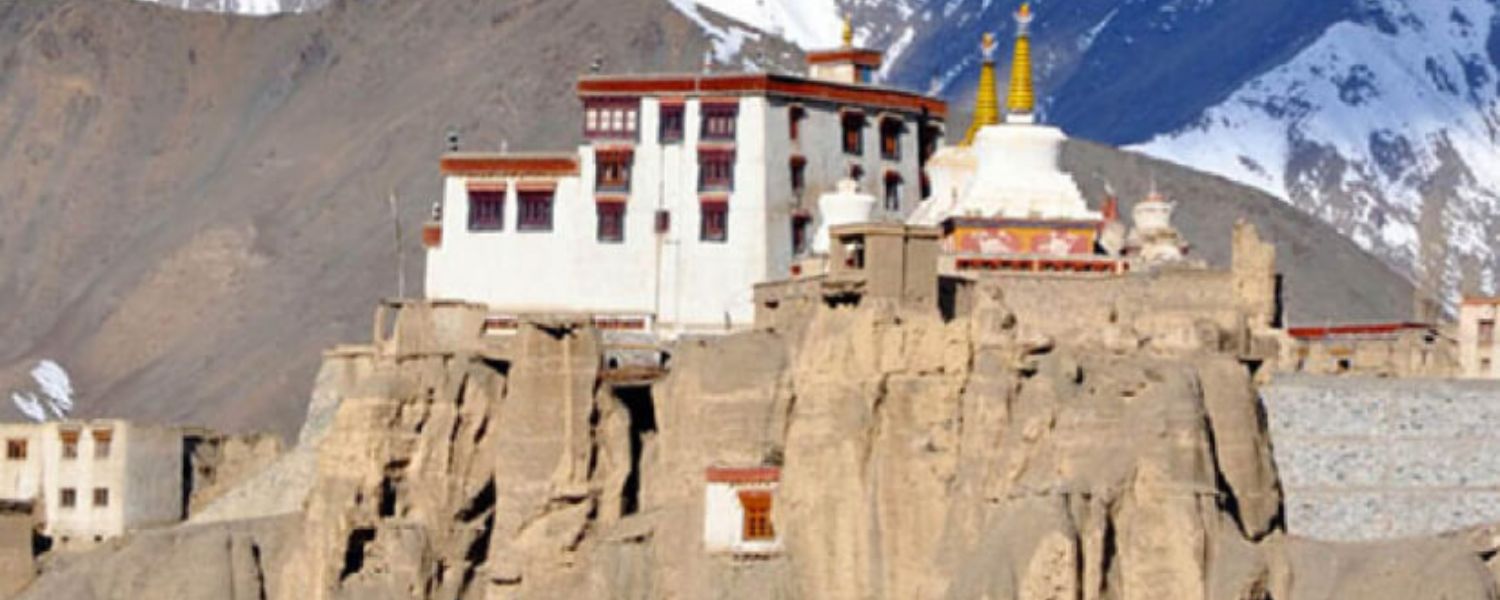
Alchi Monastery, nestled in the picturesque Ladakh region of Jammu and Kashmir, is a timeless marvel among the region’s monuments.
Renowned for its past wall paintings, exquisite wood carvings, and unique architecture, this Buddhist monastery dates back to the 10th century.
Situated in the lowland, Alchi Monastery stands out from many monastic structures in the region due to its distinctiveness.
Stepping into Alchi is akin to stepping into a sanctuary of art and spirituality. Intricate murals adorn its walls, depicting scenes from Buddhist scriptures and showcasing a blend of Indian and Tibetan artistic styles.
The monastery complex comprises four halls, each offering an into the region’s artistic heritage.
Beyond its artistic allure, Alchi Monastery remains an active center for Buddhist worship and learning, attracting pilgrims and visitors from far and wide.
Its serene surroundings amidst the Himalayan add to its spiritual ambiance, making it a must-visit destination for those seeking solace and cultural enrichment amidst the breathtaking beauty of Jammu and Kashmir.
Conclusion
In conclusion, the rich tapestry of Jammu Kashmir monuments is a testament to the region’s cultural heritage and historical significance.
From the majestic forts perched atop rugged hills to the intricately adorned temples nestled in serene valleys, each monument whispers tales of bygone eras and resonates with the echoes of diverse civilizations that have left their mark on this land.
These monuments serve as architectural marvels and invaluable knowledge repositories, offering insights into the political sociology dynamics, religious beliefs, and artistic prowess of the past.
Preserving these heritage sites is crucial not only for fostering a sense of pride and identity among the local populace but also for attracting tourists from far and wide, thereby contributing to the region’s socio-economic development.
In the heart of Jammu Kashmir, these Jammu Kashmir monuments stand as silent guardians, bridging the gap between the past and the present, reminding us of our shared history and the enduring legacy that we must cherish and safeguard for generations to come.
FAQ
Q: What are Jammu Kashmir monuments?
A: Jammu Kashmir monuments refer to the historical and architectural marvels scattered across the region, embodying its rich cultural heritage and storied past.
Q: What types of monuments can be found in Jammu Kashmir?
A: The region boasts a diverse array of monuments, including ancient temples, magnificent palaces, imposing forts, and intricately designed mosques. Each structure narrates a unique tale of bygone eras.
Q: What makes Jammu Kashmir monuments significant?
A: These monuments stand as testaments to the region’s illustrious history, reflecting the influences of various dynasties and civilizations that have left their mark on the landscape.
Q: Are Jammu Kashmir monuments open to visitors?
A: Many of these monuments are open to the public, allowing tourists to explore their architectural splendor and delve into their historical narratives.
Q: Can visitors access information about Jammu Kashmir monuments easily?
A: Absolutely! Information about Jammu Kashmir monuments, including their historical significance, architectural features, and visiting hours, is readily available through various tourist guides, websites, and local tourism offices.
